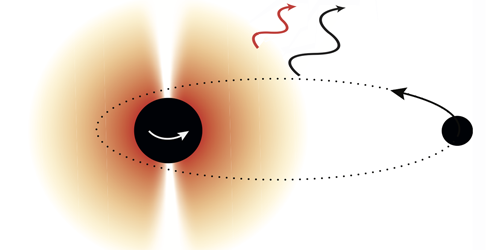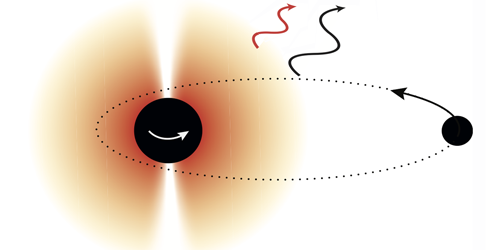Black Holes Could Reveal New Ultralight Particles
Experiments looking for physics beyond the standard model typically hunt for relatively massive particles. However, some theories predict the existence of extremely lightweight particles not occurring in the standard model, which wouldn't show up in particle collider experiments or dark matter detectors. A new calculation by Daniel Baumann of the University of Amsterdam and colleagues suggests that clouds of ultralight bosons could be detectable in the gravitational-wave signals from merging black holes. In that sense, gravitational waves could provide an entirely novel way to detect certain particles inaccessible to ordinary experiments.
A spinning black hole can use its rotational energy to amplify radiation produced by material around it, an effect called superradiance. According to some particle models, this radiation gives birth to bosons with masses in the to eV range. Neither the superradiance nor the particles are directly detectable in the background of the other light and matter swirling near a black hole. However, if the black hole collides with another black hole, the boson cloud could collapse rapidly if a certain gravitational resonance condition is met. This resonance occurs when the orbital frequency of the black hole pair multiplied by Planck's constant matches the energy levels of the boson cloud. (The boson cloud behaves like the electron cloud of an atom.) This rapid collapse would affect the harmonics of the gravitational-wave signal from the black hole merger.
These ultralight bosons could include axions and axion-like particles that arise naturally in many particle theories and might be a fraction of the elusive dark matter. The gravitational-wave signals recorded by the LIGO and Virgo Collaborations so far aren't sensitive enough to see the tiny effect of ultralight bosons, but the situation may change with improvements to both the detectors and the theoretical models used to analyze the detected waveforms.
This research is published in Physical Review D.
–Matthew R. Francis
Matthew R. Francis is a physicist and freelance science writer based in Cleveland, Ohio.





